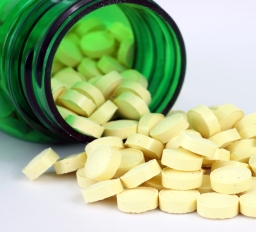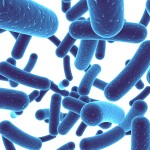By Anthoney J. Andersen – Steroidal.com
As you age, it’s imperative that you maintain good health, in order to remain active and live a long and fruitful life. Along with exercise and diet, it’s important that you make sure that your body is properly absorbing the correct amount of vitamins and minerals from the foods you eat.
One important vitamin that is often overlooked is folic acid. Folic acid is widely known for helping prevent birth defects, however, it should be noted that folic acid is not just for pregnant women – instead, it has multiple benefits for both women and men of all ages.
Discover how.
ORIGIN
According to WebMD, folate and folic acid are forms of water-soluble B vitamins (vitamin B9). Folate occurs naturally in food, and folic acid is the synthetic form of this vitamin. In 1992, the FDA (Food and Drug Administration) advised fortifying the country’s food supply with folic acid.
In 1998, folic acid began being added to cold cereals, bread, flour, pasta and bakery items.
According to Mensfitness.com, folic acid helps the body breakdown, create and use new proteins as well as form new blood cells and create new DNA. Individuals with low levels of folic acid often experience certain types of anemia (low red blood cell count).
USES
Like all B vitamins, folic acid plays an important role in maintaining the health of the central nervous system, as well as helping your body process fats and carbohydrates.
According to Everydayhealth.com, during pregnancy, folic acid assists in the development of the baby’s spine and nervous system before birth.
A woman who consumes less that 400 micrograms (mcg) of folic acid a day, is more likely to bear a child with a brain, spine, or spinal cord defect, than a woman who consumes more.
Most daily prenatal vitamins contain 800 to 1,000 mcg of folic acid.
Aside from pregnancy, folic acid can be used to help treat individuals with kidney disease. Roughly 85 percent of people with serious kidney disease have high levels of homocysteine.
HOMOCYSTEINE
According to eMedicinehealth.com, homocysteine is an amino acid (building blocks of proteins).
It is not possible to obtain homocysteine from the diet – it must be consumed from methionine, another amino acid that is found in meat, fish and dairy products.
Vitamins B6, B12 and folic acid are needed to make the reaction occur.
Foods containing methionine are transformed into homocysteine in the bloodstream. Homocysteine is then converted in the body to cysteine – which is involved in how proteins within cells are folded, maintain shape, and link to each other.
 However, if homocysteine cannot be converted into cysteine – or be returned to the methionine form – levels of homocysteine in the body increase. An increase in homocysteine levels can lead to heart attack, stroke, blood clot formation, and perhaps the development of Alzheimer’s disease.
However, if homocysteine cannot be converted into cysteine – or be returned to the methionine form – levels of homocysteine in the body increase. An increase in homocysteine levels can lead to heart attack, stroke, blood clot formation, and perhaps the development of Alzheimer’s disease.
Taking folic acid can help reduce a person with normal to slightly elevated homocysteine levels by 20 to 30 percent.
NATURAL SOURCES OF FOLIC ACID
According to Medicalnewstoday.com, dark green vegetables are excellent sources of folic acid. It should be noted that when cooking the vegetables, it’s important not to overcook them because then the folic acid content decreases dramatically.
The following are examples of foods that are rich in folic acid:
- Broccoli
- Cabbage
- Brussels sprouts
- Egg yolk
- Kidney beans
- Milk
- Oranges
- Peas
- Spinach
- Lettuce
SIGNS OF FOLIC ACID DEFICIENCY
According to Healthline.com, not eating enough folic acid can lead to a deficiency in just a few weeks. Deficiency can also occur if a person has a disease (like Crohn’s or celiac disease) that prevents their body from absorbing folic acid.
Symptoms of folic acid deficiency are often subtle, and include:
- Fatigue
- Gray hair
- Mouth sores
- Tongue swelling
- Growth problems
Symptoms of anemia caused by folic acid deficiency:
- Persistent fatigue
- Pale skin
- Tender tongue
- Lethargy
- Irritability
- Diarrhea
PREVENTION OF VITAMIN RELATED ANEMIA
According to Mayo Clinic, you can prevent certain forms of vitamin deficiency anemia by choosing a diet that includes a variety of foods:
FOODS RICH IN FOLIC ACID
- Dark green leafy vegetables
- Nuts
- Enriched grain products like bread, cereal, pasta and rice
- Fruits and fruit juices
FOODS RICH IN VITAMIN B-12
- Eggs
- Milk, cheese and yogurt
- Red & white meats and shellfish
- Fortified foods, like breakfast cereals
FOODS RICH IN VITAMIN C
- Broccoli
- Citrus fruits and juices
- Strawberries
- Tomatoes
According to the Institute of Medicine’s Food and Recommendation Board, most adults need to consume these daily amounts of the following vitamins:
- Folic acid: 400 mcg
- Vitamin B-12: 2.4 mcg
- Vitamin C: 75 to 90 milligrams (mg)
CONCLUSION
The best way to get the folic acid (and other important vitamins) is through a well balanced diet that includes grains, vegetables, fruits, dairy and protein foods. You should be eating foods from each group everyday.
However, the amount you eat from each group depends on your age, gender and how active you are. So, if you’re unsure about the amount you should be consuming each day, consult with your physician or a licensed nutritionist to help you begin a diet plan that is ideal for your health and lifestyle goals.
Start today.







